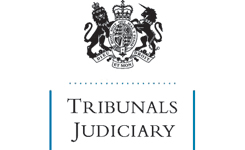|
Notes:
|
Court of Appeal decision reported as [2017] AACR 37 Environmental information – definition of environmental information in Environmental Information Regulations regulation 2(1)(c) and (e)
Mr Henney requested information from the Department for Business, Energy and Industrial Strategy (formerly the Department for Energy and Climate Change) on a Project Assessment Review (PAR) about the communications and data component of the government’s Smart Meter Programme (SMP). He complained to the Information Commissioner after the Department, relying upon exemptions under the Freedom of Information Act 2000 (FOIA), had provided him with a heavily redacted copy of the PAR. The Information Commissioner found that section 35(1) of FOIA had been engaged, but decided that the public interest favoured disclosure of the requested information. The Department appealed against that decision to the First-tier Tribunal (F-tT) and Mr Henney also appealed arguing that the Environmental Information Regulations (EIR) was the appropriate access regime not FOIA. The F tT upheld Mr Henney’s appeal and the Department appealed to the Upper Tribunal (UT). It decided that the disputed information fell within regulation 2(1)(c) of the Environmental Information Regulations, holding that when identifying the relevant measure it was permissible to look at the bigger picture, beyond the precise issue with which the disputed information was concerned. The Department appealed to the Court of Appeal arguing that the UT’s approach was neither permissible nor appropriate; that it had misapplied regulation 2(1)(c) and had failed to consider whether the information in the PAR was about the SMP.
Held, dismissing the appeal, that:
1. there was an important difference between the definition of information in section 1 of FOIA, which focused on the information itself, and environmental information in regulation 2(1)(c), which also focused on the relevant measure. Information was "on" a measure if it was about, related to, or concerned the measure in question and the SMP was clearly a measure which affected, or was likely to affect, the elements and factors referred to in regulation 2(1)(c) (paragraph 37);
2. the UT’s finding that it was permissible to look beyond the precise issue with which the disputed information was concerned when identifying the relevant measure was consistent with regulation 2(1)(c) and did not amount to a finding that it was permissible to look at issues with which the information was not concerned, or at issues with which it was merely connected. The “bigger picture” was an unhelpful phase but the UT had simply meant that when purposively applying regulation 2(1) the information had to be considered in its context. Simply because a project had some environmental impact it did not follow that all information concerned with that project must necessarily be environmental information. The line between information that qualified as environmental information and that which did not had to be drawn by construing the regulations, the Directive, and the Aarhus Convention purposively and was fact and context-specific (paragraphs 39 and 44);
3. there was nothing in the regulations to suggest that an artificially restrictive approach should be taken to regulation 2(1). Information may be about a specific measure, more than one measure, or about both a sub-component of a broader measure and the broader measure itself. Identifying the measure that the disputed information was on might require consideration of the wider context, including the purpose for which it was produced, how important it was to that purpose, how it was to be used, and whether access to it would enable the public to be informed about, or to participate in, decision-making in a better way (paragraphs 42 and 43);
4. the UT had been correct to find that the PAR was “on” the SMP for the purposes of regulation 2(1)(c) because it was integral to the SMP as a whole, and it would be unnecessarily narrow and artificial to draw a distinction between a PAR on the communications and data component and a PAR on the SMP (paragraph 53).
|
